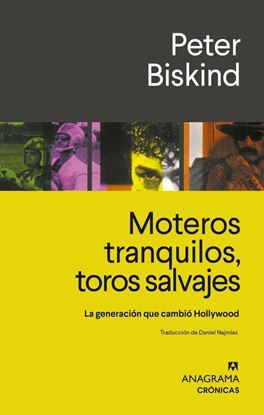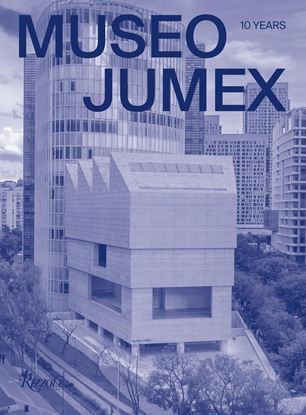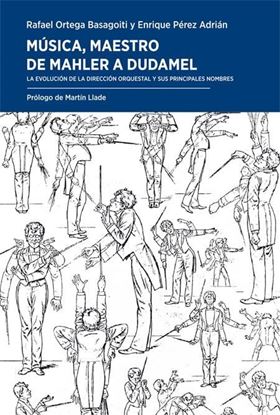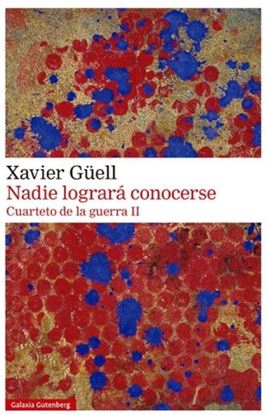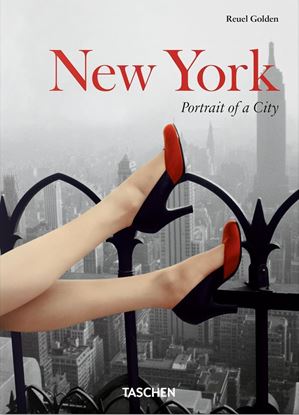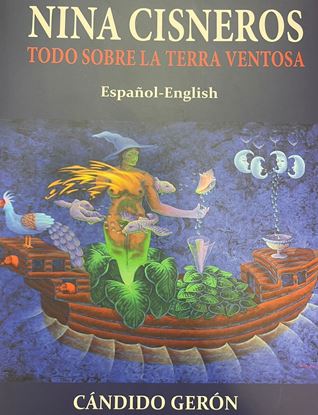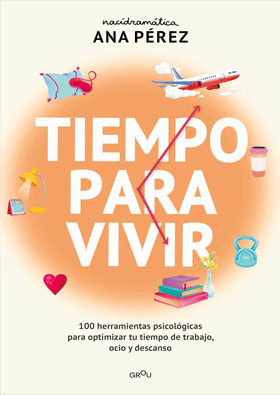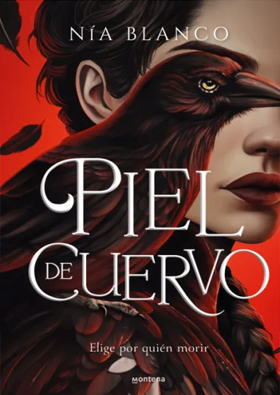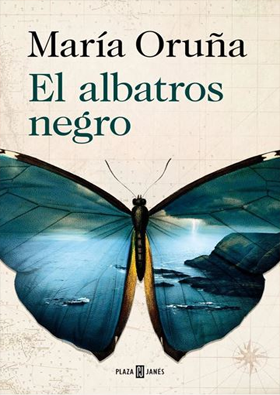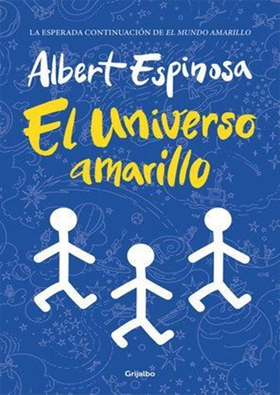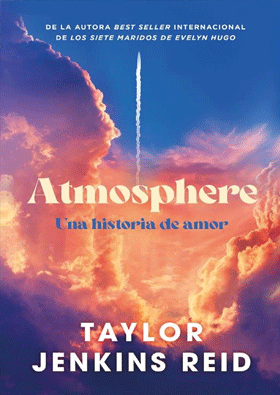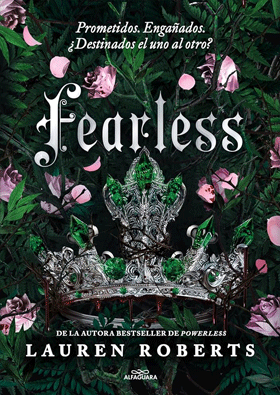

MOTEROS TRANQUILOS, TOROS SALVAJES
Basado en cientos de entrevistas con los propios directores, pero también con productores, estrellas, agentes, guionistas, ejecutivos de los estudios, esposas y ex esposas, el libro de Peter Biskind narra día a día la epopeya de los jóvenes lobos de Hollywood, la génesis de sus películas y sus luchas contra el establishment.
Moteros tranquilos, toros salvajes es la espléndida crónica de ese viaje alucinante que fue Hollywood en los años setenta, la historia apasionante y verídica de la última gran edad de oro del cine americano, una exaltada celebración de la creatividad y la experimentación, pero también del sexo, las drogas y el rock and roll.
1,700
MUSEO JUMEX. 10 YEARS
This volume celebrates the 10th anniversary of Museo Jumex, Mexico City’s most important contemporary art museum, and its unique collection.
Located in the vibrant Polanco neighborhood of Mexico City, Museo Jumex opened its doors to the public in 2013 as a one-of-a-kind museum devoted to the production and discussion of contemporary art.
Founded by Eugenio López Alonso, a pioneer in the realm of contemporary art collecting in Mexico, and designed by Sir David Chipperfield, 2023 winner of the Pritzker Architecture award, Museo Jumex has achieved international recognition for its dual mission of bringing works of renowned international artists to Mexico for the first time and elevating the work of today’s Mexican and Latin American artists.
5,995
MUSICA, MAESTRO: DE MAHLER A DUDAMEL
Un ensayo original e inédito en español, que nos propone un recorrido por los principales hitos de la dirección orquestal: de los compositores-directores, de Richard Strauss a Leif Segerstam; los titanes, como Toscanini, Furtwängler, Walter, Kemplerer, los Kleiber o Celibidache; los artífices del Festival de Bayreuth, de Knappertsbusch a Janowski; los directores europeos emigrados a Estados Unidos, de Koussevitzky a Dorati; la edad de oro de la música grabada, con Karajan a la cabeza; las grandes batutas de Radio, de Jochum a Haitink; los directores italianos, los rusos, los «sires»… o los especializados en el Barroco. Están, sin duda, todos los grandes nombres, pero también unos cuantos más que lo merecen por su interés y, como apunta Martín Llade en su prólogo, «el juicio que sus autores nos proponen, podrá ser compartido o no, pero nunca dejará de ser justo, o de tratar de serlo». Un libro plagado con casi 1000 referencias onomásticas, 200 biografías de directores –no falta mención a las directoras de orquesta: las pioneras, las que ya han triunfado y las emergentes–, y un capítulo especial dedicado a las principales figuras de la dirección en España, que no renuncia a la concisión y que pone por encima de todo la honestidad. En efecto, los temas espinosos, que no escasean, no se eluden pero se enfocan siempre desde el respeto, «alejándose de esos chismes que tantas veces han llenado algunos libros con la pretensión de hacer historiografía a golpe de chascarrillo», apunta Llade. Un libro del que va a disfrutar cualquier amante de esa lengua universal que es la música clásica.
1,750
NADIE LOGRARA CONOCERSE. GUERRA II(OF2)
Tras el éxito de La Música de la Memoria, libro dedicado a los grandes músicos del siglo XIX, Xavier Güell se adentra en los años más oscuros del siglo xx. Cuarteto de la guerra narra la historia de cuatro hombres que luchan por su vida y por su música cuando los totalitarismos y el horror bélico asolan Europa. Nueva York, Berlín, Múnich, Moscú, Barcelona y Los Ángeles son los escenarios donde transcurre el épico enfrentamiento de cuatro grandes compositores con el poder político de su tiempo, para evitar que su obra sea sometida, dirigida y utilizada, a la vez que procuran desesperadamente la supervivencia de los seres que aman. Cuarteto de la guerra reflexiona así mismo sobre la música como revelación y sabiduría, como eco de lo intangible, como impulso directo a lo más profundo del alma, sobre el diálogo entre el hombre y lo invisible y, por último, sobre el sentido de nuestra propia existencia. En el segundo volumen de la tetralogía, Nadie logrará conocerse, Richard Strauss, considerado el mayor compositor de su tiempo, decide permanecer en la Alemania nazi y aceptar la presidencia de la Cámara de Música del Reich con el propósito de proteger a su familia -su nuera y sus dos nietos son judíos-, asegurar el estreno de su ópera La mujer silenciosa, cuyo libreto ha escrito el judío Stefan Zweig, y favorecer la cultura alemana. Decisión controvertida que le hará aparecer a los ojos del mundo como un colaboracionista y ser sometido, al final de la guerra, a un proceso de desnazificación que durará más de tres años. Los restantes títulos de Cuarteto de la guerra están dedicados a Béla Bartók (Cuarteto de la guerra I. Si no puedes, yo respiraré por ti), Dimitri Shoshtakóvich (Cuarteto de la guerra III. Y Stalin se levantó y se fue) y Arnold Schoenberg (Cuarteto de la guerra IV. Romperé los cerrojos con el viento).
500
NEW YORK. PORTRAIT OF A CITY (PO) (GB)
From the building of the Brooklyn Bridge to immigrants arriving at Ellis Island, the slums of the Lower East Side to magnificent art deco skyscrapers, New York’s remarkable rise, reinvention, and growth is not just the tale of a city, but the story of a nation. This beautiful book lays out the streets, sidewalks, culture, and crowds of the greatest city in the world—in all the greatness of its extremes, contradictions, energy, and attitude. With vistas of Central Park alongside Coney Island and the sleaze of Times Square, this city portrait champions the complexity and chaos of New York—its architecture, culture, fashion, and ethnic diversity. More than just a tribute to the metropolis and its civic, social, and photographic heritage, New York. Portrait of a City also pays homage to the indomitable spirit of those who call themselves New Yorkers: full of hope and strength, resolute in their determination to succeed among its glass and granite towers.
1,350

